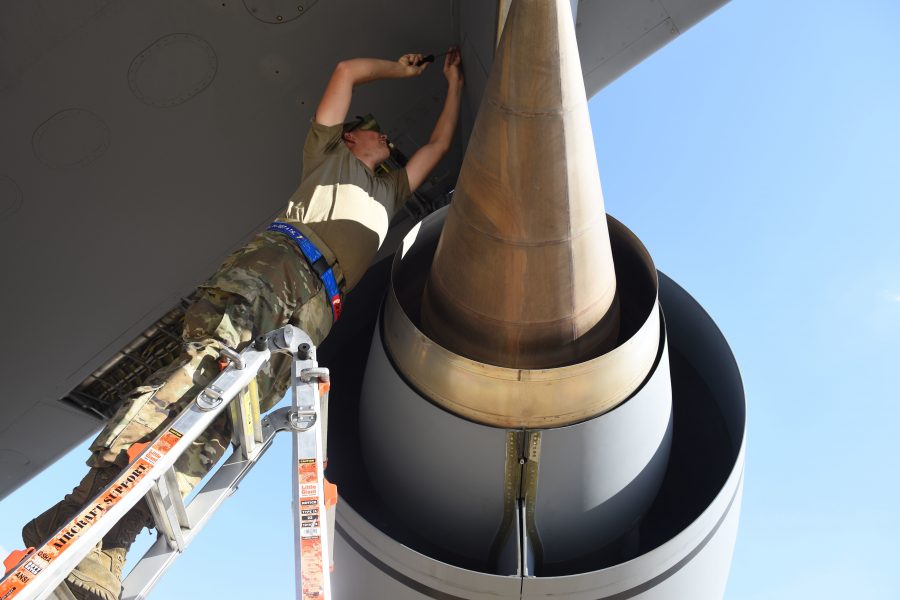The Air Force’s fledgling Rapid Sustainment Office plans to triple the number of aircraft using predictive maintenance algorithms in 2020, the service told Air Force Magazine.
The Conditions-Based Maintenance Plus (CBM+) program, which started last year, and related initiatives use sensors and algorithms to collect data on which weapon system parts need to be replaced before they fail. By being proactive instead of waiting for components to break, the service hopes to save money and keep aircraft and Airmen safer.
As of May 14, the RSO was using predictive maintenance on the B-1, KC-135, C-5, C-130, and F-15. By the end of September, it wants to expand that effort to include the B-52, C-17, AC-130J, MC-130J, CV-22, HH-60, RC-135, MQ-9, F-16, RQ-4, A-10, and Minuteman III intercontinental ballistic missile.
The Air Force also has partnered with artificial intelligence firm C3 to bring predictive maintenance to the E-3, cutting unscheduled maintenance by nearly 30 percent, Inside Defense previously reported.
Air Force Magazine recently reported the RSO has saved or avoided $68 million in maintenance costs so far.
All Air Force platforms should be using some form of predictive maintenance by the end of fiscal 2022, except for those slated for retirement in the near future, service spokesman Daryl Mayer said in an email. The RSO plans to add predictive maintenance for 10 to 20 platforms per year for the next five years. It will cost about $3 million per system to get started, and $1.5 million per system to sustain those efforts.
The service is also prototyping data-driven sustainment for ground support equipment and hangar heating and cooling systems, looking for insight on how to apply predictive maintenance in areas other than aircraft.
“Many people think of this as an analytic challenge, but in the early stages it is not,” the service said. “It is a challenge to get useful data [both sensor-based and record-based] and it is a challenge to the supply and repair systems. We expect demand for analysis to increase over time, but at this point it is not a constraint.”
However, the initial pilot programs have shown USAF it still needs human insight to make sense of the data.
“Data needs to be balanced with subject matter experts’ input on the item being analyzed,” Mayer said. “Additionally, we have learned that we must consider the system at the enterprise level.”
Mayer said parts that seem like good candidates for predictive maintenance often end up lacking enough information to repair only that component. Sometimes, the supply chain cannot support the spike in demand for new parts when a predictive maintenance initiative begins.
“Removing parts before they fail results in an initial spike in demand for parts (if the fielded inventory has lots of hours) and also requires specific repair procedures to support overhauls rather than just fixing what was broken (since it isn’t broken yet),” Mayer said.
Though the Air Force has pointed to artificial intelligence, machine learning, and big data as keys to shrinking and repurposing its workforce, that doesn’t necessarily mean the service will need fewer maintainers as a result of CBM+.
“Conceptually, predictive maintenance results in a decrease in unplanned maintenance actions, which we expect to show positive value for the maintenance community,” Mayer added. “However, it isn’t yet evident that it will reduce manpower needs. As a result of predictability, unplanned maintenance actions will become planned maintenance actions, shifting, not necessarily reducing, manpower needs.”
